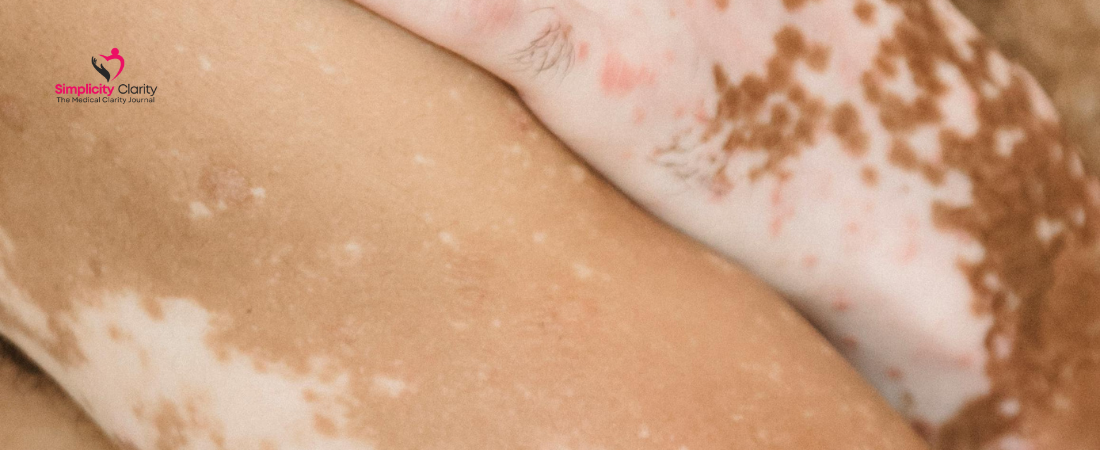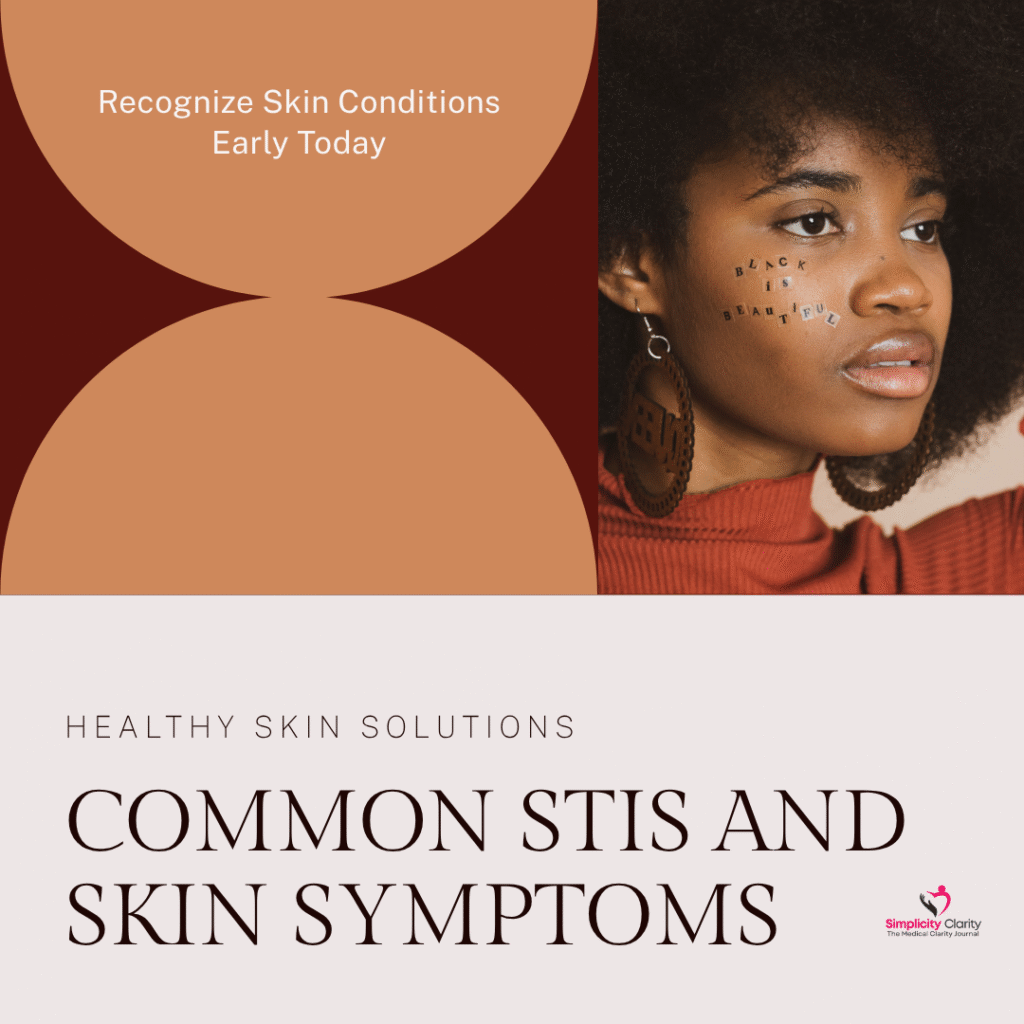
Common STI-Linked Skin Conditions: Early Detection and Clinical Clues
- June 30, 2025
- 1 Like
- 369 Views
- 0 Comments
Abstract
Skin manifestations are often the earliest visible signs of sexually transmitted infections (STIs). Early recognition of these dermatological symptoms—such as ulcers, rashes, and blisters—is essential for timely diagnosis, treatment, and prevention of complications. In Sub-Saharan Africa, where STI-related stigma and late presentation remain challenges, community health education and clinical vigilance are critical. This paper outlines the most common skin-related signs of STIs, the pathogens behind them, diagnostic cues, and recommended management practices based on WHO guidelines and recent studies.
Introduction
Sexually transmitted infections (STIs) affect more than 1 million people globally each day (World Health Organization [WHO], 2023). In many cases, these infections first present with skin-related symptoms that are visible on or around the genitalia, anus, mouth, or generalized on the skin. In African settings, early detection of STI-linked skin conditions can be hindered by limited access to diagnostics, stigma, and misinterpretation of symptoms as other local skin diseases. This paper focuses on the identification of common dermatological manifestations of STIs, especially relevant for healthcare workers, adolescents, and sexually active populations in resource-limited settings.
1. Genital Herpes (Herpes Simplex Virus Type 2)
🧬 Pathogen:
Herpes Simplex Virus type 2 (HSV-2); occasionally HSV-1.
🩺 Skin Symptoms:
- Small, painful fluid-filled blisters or ulcers on the genitals, anus, or mouth
- Tingling or burning before blisters appear
- Recurrent outbreaks in some individuals
📸 Clinical Appearance:
Grouped vesicles on a red base that rupture into shallow ulcers.
🔬 Diagnosis:
- Clinical examination
- PCR testing of lesion swabs (if available)
🌍 African Note:
A Ugandan study showed HSV-2 seroprevalence of up to 50% in women aged 18–45 (Mbazira et al., 2020). Herpes increases HIV acquisition risk by 2–4 times.

2. Syphilis (Treponema pallidum)
🧬 Pathogen:
Treponema pallidum, a spirochete bacterium.
🩺 Skin Symptoms by Stage:
- Primary Stage:
- Painless genital ulcer (chancre)—often unnoticed, heals in 2–6 weeks.
- Secondary Stage:
- Symmetrical rash on palms and soles
- Flat moist lesions (condylomata lata) in genital/perianal areas
- Mucous patches in mouth
- Tertiary Stage:
- May involve destructive skin ulcers (gummas), years after infection.
🔬 Diagnosis:
- Rapid syphilis test
- RPR or VDRL serology
- Confirm with TPHA/FTA-ABS
🌍 Africa Focus:
Syphilis is resurging in many regions. A Nigerian antenatal study showed 5–7% prevalence among pregnant women (Okonkwo et al., 2021).
WHO Africa Syphilis Screening Guidelines: https://www.who.int/publications/i/item/9789241550216
3. Human Papillomavirus (HPV)
🧬 Pathogen:
Human papillomavirus (mainly types 6 and 11 for warts; 16 and 18 for cancer risk)
🩺 Skin Symptoms:
- Genital warts (condylomata acuminata)—soft, flesh-colored growths on the vulva, penis, anus, or groin
- Often painless but may itch or bleed
📸 Clinical Clues:
- Cauliflower-like clusters, multiple sizes
- May increase in pregnancy or immunosuppression
💉 Prevention:
- HPV vaccine (available in Africa via GAVI and national programs)
- Condom use reduces, but does not eliminate risk
🔬 Diagnosis:
- Clinical inspection
- Colposcopy or Pap smear for cervical HPV
4. HIV-Related Skin Conditions
🧬 Pathogen:
Human Immunodeficiency Virus (HIV)
🩺 Skin Symptoms:
- Seborrheic dermatitis (scaly rash on scalp, face, chest)
- Kaposi’s sarcoma (purplish skin nodules or plaques)
- Herpes zoster (shingles)—painful blisters in a dermatomal distribution
- Molluscum contagiosum, oral thrush, eczema, pruritic papular eruptions
🔬 Diagnosis:
- HIV rapid antibody test (Determine, Uni-Gold)
- CD4 count and viral load for staging
🌍 Africa-Specific Insight:
In East and Southern Africa, where HIV is highly prevalent, many patients present first with skin issues before being tested for HIV (Amegbor et al., 2022).
UNAIDS HIV Portal: https://aidsinfo.unaids.org/
5. Chancroid (Haemophilus ducreyi)
🧬 Pathogen:
Haemophilus ducreyi
🩺 Skin Symptoms:
- Painful genital ulcers with ragged edges and soft base
- May have foul smell
- Inguinal lymphadenopathy (bubo) that may rupture
🔬 Diagnosis:
- Clinical suspicion in areas with limited lab resources
- Culture (not widely available)
- Ruling out syphilis and herpes is essential
🌍 African Burden:
Although declining globally, chancroid remains endemic in some parts of East and Central Africa with poor STI infrastructure.
When to Seek Medical Attention
Early care prevents complications and transmission. Seek help if you notice:
- Genital ulcers or blisters
- Pain, itching, or discharge from genital areas
- Unusual rashes, especially on hands/feet
- Skin nodules, especially if spreading or not healing
Diagnostic Tools and WHO Syndromic Approach
Where lab tests are limited, WHO recommends syndromic management based on symptoms like:
- Urethral discharge
- Genital ulcers
- Vaginal discharge
- Inguinal swelling
WHO Guidelines:
https://www.who.int/publications/i/item/9789241546264
Conclusion
Skin-related symptoms are often the first visible warning signs of sexually transmitted infections, especially in low-resource settings. Public awareness, early recognition by healthcare workers, and adherence to WHO’s syndromic management guidelines are essential to prevent STI complications, reduce HIV risk, and protect reproductive health across Africa. Integrating dermatological screening in STI programs can save lives and reduce long-term burdens on health systems.
References
Amegbor, P. M., et al. (2022). Skin conditions as early signs of undiagnosed HIV infection in East Africa. International Journal of STD & AIDS, 33(10), 890–898. https://doi.org/10.1177/09564624221102760
Mbazira, K., et al. (2020). Prevalence of HSV-2 and its association with HIV in Uganda. African Health Sciences, 20(2), 843–849. https://dx.doi.org/10.4314/ahs.v20i2.41
Okonkwo, I. R., et al. (2021). Syphilis seroprevalence and risk among antenatal mothers in Nigeria. Pan African Medical Journal, 40(65). https://doi.org/10.11604/pamj.2021.40.65.28976
World Health Organization. (2023). Sexually transmitted infections (STIs). https://www.who.int/news-room/fact-sheets/detail/sexually-transmitted-infections-(stis)
UNAIDS. (2023). HIV epidemiology by country. https://aidsinfo.unaids.org/



Leave Your Comment